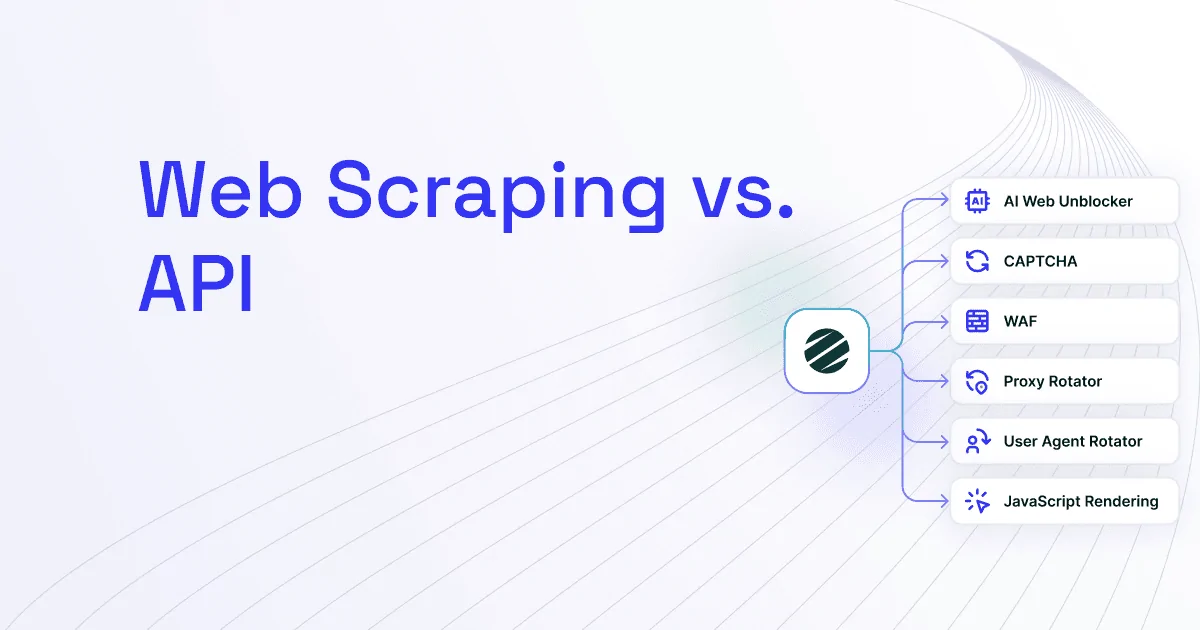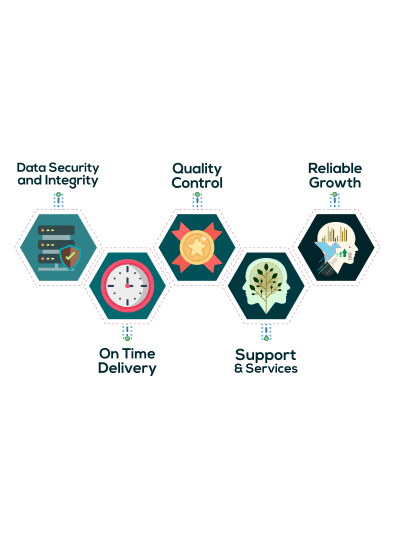
APIs vs Scrapers: Difference Between API and Web Scraping
If you’ve ever tried to collect data from the web, you’ve likely come across two common tools: APIs and web scrapers. Both serve the purpose of gathering information from websites, but they do it in very different ways. Whether you’re building a data product, managing leads, or just trying to stay competitive in the digital world, understanding the difference between API and web scraping is key.
Let’s break it all down in plain, easy-to-follow language. We’ll compare how each method works, when to use one over the other, and what the risks and benefits are, so you can make a smarter choice based on your goals.
What Is an API?
An API (Application Programming Interface) is a structured way for one software program to interact with another. Think of it as a menu in a restaurant. The API lists the “dishes” (data or services) that a website or system offers, and you can place an order (a request) to get exactly what you need.
For example, LinkedIn offers a private API that enables select partners to access user data, job listings, or company insights cleanly and reliably, if they have the necessary permission.
APIs return data in a structured format, usually JSON or XML. This means you don’t have to clean or guess what you’re getting, it comes ready to use.
What Is Web Scraping?
Web scraping, on the other hand, is more like peeking through a window to read a menu taped to the wall. It involves using code or tools to extract visible information from a website’s HTML page, often the same way a human would read the page, just automated.
A scraper doesn’t rely on a formal contract like an API. It simply loads the page, finds the necessary data (such as names, job titles, or contact details), and extracts it.
Tools like a LinkedIn Profile Scraper with Magical API take this approach to the next level by combining scraping with powerful parsing and data structuring, helping recruiters and researchers extract profiles in a smarter, more scalable way.
The Core Difference Between API and Web Scraping
While both methods fetch data, here’s a simple way to remember the difference between API and web scraping:
APIs are official and structured.
Scraping is unofficial and flexible.
Let’s explore their key differences more deeply:
|
Feature |
API |
Web Scraping |
| Access | Provided by the website (with terms) | No permission required (in most cases) |
| Structure | Returns clean, organized data | Scraped from messy HTML |
| Speed | Usually faster and more stable | Slower and can be blocked |
| Scalability | High with rate limits | Medium with risk of bans |
| Legal & Ethical | Clearly defined usage rights | Gray area depending on site policies |
| Use Case | Apps, dashboards, structured reporting | Data mining, research, market intelligence |
Pros and Cons of Using APIs
Pros
Reliable data: APIs are made for machines. You get clean, well-documented results.
Official and legal: When using an API, you’re following the platform’s rules.
Fast updates: APIs often provide real-time or near-real-time information.
Stable structure: You can depend on the format not changing overnight.
Cons
Restricted access: Not all APIs are public or free.
Rate limits: You can only request a certain amount of data in a given time frame.
Limited scope: You only get what the provider allows you to see.
Pros and Cons of Web Scraping
Pros
No need for permission: You can scrape data from most public websites.
Access to full content: You’re not limited to what an API exposes.
Flexible targets: Even websites without APIs can be scraped.
Cons
Unstable structure: If a website changes its layout, your scraper can break.
Legal risks: Scraping may violate a site’s terms of service.
IP bans: Sites may block your IP if you send too many requests.
Use Cases: When to Choose Which?
When to Use an API:
You need stable, structured data for a business app or internal tool.
You have access to a premium service or partner program.
Your project involves sensitive data and legal compliance matters.
You need to integrate data smoothly into systems or dashboards.
For example, if you’re building a sales dashboard that pulls company data, using a LinkedIn Company Scraper with structured API integration is a more scalable solution than scraping raw HTML.
When to Use Web Scraping:
There’s no official API available.
You only need to extract public data.
You need to collect data across many sources quickly.
You’re experimenting or doing one-time data collection.
For instance, researchers running job market analysis across different career pages often turn to scrapers when APIs are unavailable or too restrictive.
Combining Both: The Hybrid Approach
Many companies now combine both methods. For example, they may use APIs for structured, high-priority data and scrapers for additional public content not covered by those APIs.
Let’s say you’re enriching leads for your CRM. You might use an API to fetch company details and a LinkedIn Profile Scraper to extract personal profile data that isn’t available via the official API.
This hybrid strategy gives you flexibility while still maintaining a layer of reliability and compliance.
Legal and Ethical Considerations
This part matters, especially if you plan to scale your operations.
APIs:
You’re operating within legal boundaries when using licensed APIs.
Most platforms have usage terms and request quotas.
Scraping:
Scraping public data is generally legal in many countries, but only if:
You don’t violate robots.txt
You’re not copying copyrighted or private content
You don’t overload the site with excessive traffic
Many large platforms, like LinkedIn, restrict scraping in their Terms of Service.
That said, scrapers like the LinkedIn Company Scraper are built to be respectful, careful, and compliant with industry best practices. Still, it’s wise to consult a legal expert before deploying scrapers at scale.
How It Impacts Business Performance
Let’s put the tech aside for a second and focus on outcomes. Here’s how your data choice, API or scraper, can affect real-world performance.
1. Time to Market
APIs reduce development time with prebuilt connections. Scrapers need constant upkeep.
2. Data Accuracy
APIs offer high accuracy, while scrapers require validation steps (like cleaning or deduplication).
3. Costs
APIs: Can be expensive if you hit usage caps or require premium access.
Scrapers: Cheap at first, but maintenance and proxy costs add up over time.
4. Scalability
APIs scale easily within platform limits. Scrapers need smart throttling and IP rotation to avoid bans.
Trends in 2025: What the Future Holds
As we move deeper into 2025, both APIs and scrapers are evolving:
AI-assisted scraping is becoming more accurate and resilient to layout changes.
API aggregators are providing unified access to data from multiple sources.
Low-code data tools allow users to connect APIs and scrapers without deep programming knowledge.
Privacy regulations are pushing more platforms to offer controlled API access rather than block scraping completely.
In this space, solutions like the LinkedIn Profile Scraper are growing popular because they blend automation, smart parsing, and data enrichment into one easy-to-use tool.
Final Thoughts: Which One Should You Choose?
It depends on your use case.
Choose APIs when you want official, reliable, scalable data, especially for long-term products or B2B integrations.
Choose web scraping when speed, flexibility, or access to open public data is your top priority.
In most modern data stacks, the right answer is a mix of both. Understand their strengths. Use each where it shines. And when in doubt, pair them with a powerful backend that can parse, clean, and integrate the results into your workflow.
Whether you’re extracting hiring data, lead insights, or real-time market intelligence, knowing the difference between API and web scraping helps you move smarter and stay ahead of the game.



